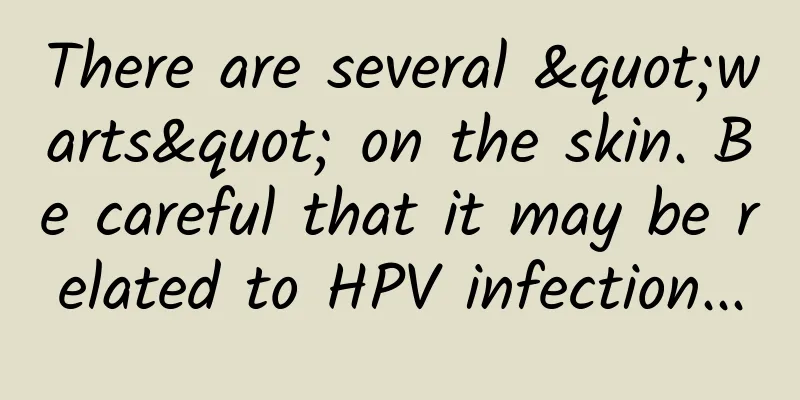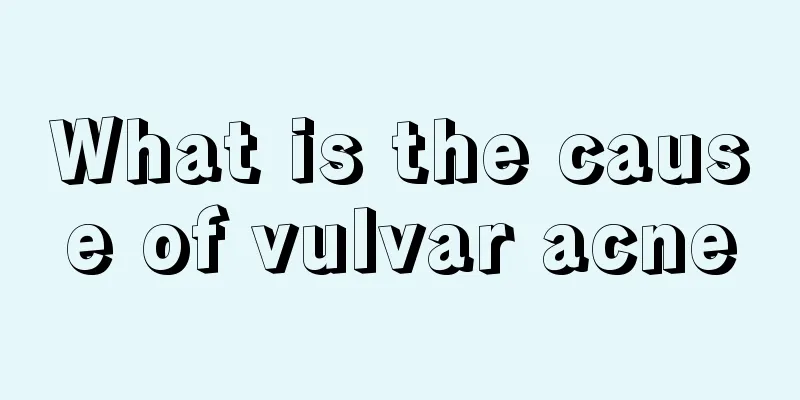There are several "warts" on the skin. Be careful that it may be related to HPV infection...

|
Recently, a friend of mine had several warts on her hands. She was very nervous and came to consult me to ask what was going on. I told her that it was caused by human papillomavirus (HPV) infection. She was very surprised and said that she knew HPV was a sexually transmitted disease and could cause cervical cancer. Thinking of this, she was puzzled and scared. In fact, her understanding is wrong, so don't worry too much. The HPV that causes "small bumps" on the skin is not completely the same as the HPV that causes cervical cancer . What is going on? To figure this out, we must first understand the HPV family. What is it? Human papillomavirus (HPV) belongs to the genus Papillomavirus A of the family Papovaviridae. It is a spherical DNA virus that can cause squamous epithelial proliferation in the skin and mucous membranes of the human body. According to the different tissue sites invaded and the different clinical manifestations caused, we can classify the various subtypes of HPV viruses into four major types: (1) Low-risk skin types : including HPV1, 2, 3, 4, 7, 10, 12, 15 and other virus subtypes, which are associated with common warts, flat warts, plantar warts, etc.; (2) High-risk skin types : including HPV5, 8, 14, 17, 20, 36, 38 and other virus subtypes, which are related to epidermodysplasia verruciformis. Other malignant tumors that may be related to HPV infection include: vulvar cancer, penile cancer, anal cancer, prostate cancer, and bladder cancer; (3) Low-risk mucosal types : such as HPV6, 11, 13, 32, 34, 40, 42, 43, 44, 54 and other virus subtypes, which are associated with infection of the genital, anal, oropharyngeal, esophageal mucosa, etc.; (4) Mucosal high-risk types : HPV16, 18, 30, 31, 33, 35, 39, 53 and other virus subtypes, which are associated with cervical cancer, rectal cancer, oral cancer, tonsil cancer, etc. What changes will occur to the skin after being infected with HPV? So, what type of HPV infection is the "small wart" on the hand of the friend mentioned at the beginning? Through the classification just now, you may have discovered that "small warts" and "small bumps" are some skin manifestations of low-risk HPV infection. Let's focus on understanding what kind of changes low-risk HPV infection will bring to our skin: 1. Common warts : Papules are rice-sized, with obvious keratinization on the surface, rough and uneven, thorn-like tops, and hard texture. The lesions may be single or multiple, and may gradually increase by self-inoculation. They often occur on the hands and feet. 2. Diseases manifested in special parts : Periungual warts : occur around the fingernails and toenails, and are characterized by thickening and keratinization under the nail. Plantar warts : occur on the soles of the feet, and bleeding spots and black spots can be seen on the surface of the lesions due to pressure. Filiform warts : multiple small, soft, thread-like warts that occur on the neck and eyelids. Flat warts : They mostly occur on the face and are also common on the trunk. They are mostly flat papules 2-5mm in size, skin color or light brown, with a smooth surface, and are round or quasi-round. They are occasionally scratched due to itching, forming autoinoculation, or implanted along the surface of skin damage. What other diseases may low-risk HPV cause? Low-risk mucosal HPV may infect the external genitalia or mucous membranes of special parts, but the diseases it causes are usually benign, including: 1. Genital warts ( condyloma acuminatum ) : Infection of external genitalia is prone to occur in female vulva, vagina, cervix and around anus, inside anal canal, and urethral opening ; male vulva, penis, testicular surface, urethral opening, around anus, inside anal canal and other external genitalia; rarely in armpits, umbilicus, between toes, under breasts and other parts. After infection, the specific conditions of the affected area are as follows: (1) Typical manifestations : Typical skin lesions visible to the naked eye, with morphologies such as papilloma, cauliflower, granular, and cockscomb; (2) Subclinical manifestations : difficult to identify with the naked eye, can only be observed with the help of a magnifying glass or acetowhite test, histological and cytological tests show typical HPV pathological changes; (3) Latent infection : HPV enters the cells of the skin and mucous membranes without causing any clinical manifestations or histocytological abnormalities. It can only be detected in the cells of the skin and mucous membranes through molecular biological methods, nucleic acid hybridization, etc. 2. Diseases manifested in special parts : It causes wart-like lesions on the surface of the oral mucosa, recurrent respiratory papillomatosis , etc. Prevention and treatment of HPV infection You may have heard that "a mother wart will give birth to a baby wart." This is not an exaggeration. The scientific explanation is that HPV is contagious, and the virus continues to replicate and increase, which will cause more damage to the skin and mucous membranes . Therefore, having a "wart" is not scary, but it should be treated actively. The main treatments for low-risk HPV infection include: (1) Physical therapy : Removal of warts visible to the naked eye: laser, microwave, cryosurgery, electrocautery, surgical resection (LEEP knife for gynecology, etc.), photodynamic therapy, etc. (2) Drug treatment : 0.5% podophyllotoxin tincture, 5% imiquimod, 50% trichloroacetic acid, fluorouracil ointment, etc. (3) Immunotherapy can reduce recurrence and speed up the clearance of lesions. The drugs include: interferon, interleukin, thymosin, transfer factor, BCG, isotretinoin, autologous vaccines, etc. There is no need to worry too much about low-risk HPV infection, and its prevention mainly depends on good personal hygiene habits and good immunity . Currently, the most effective way to prevent HPV infection is HPV vaccine , which mainly prevents high-risk HPV infection that seriously threatens life and health . The HPV vaccines that have been launched on the market are divided into two-valent HPV vaccines, four-valent HPV vaccines and nine-valent HPV vaccines according to the number of HPV types they can prevent. All three vaccines can fight against infection with high-risk HPV (HPV types 16 and 18), and their effects are very significant and deserve everyone's attention. Summarize: Human papillomavirus (HPV) is a large family, among which high-risk subtypes that threaten human life and health need to be taken seriously. Vaccination helps prevent high-risk HPV infection. In addition, there are low-risk subtypes of HPV, which may cause "small warts" on the skin. Since HPV is contagious, it is also recommended that you do not underestimate such infections and go to the hospital's dermatology department for treatment in a timely manner . Author: Wang Fang, attending physician of cosmetic dermatology, master of medicine Review | Jin Dong, Associate Researcher, Institute of Infectious Disease Prevention and Control, Chinese Center for Disease Control and Prevention |
<<: GlobalWebIndex: Google+ has 360 million active users, second only to Facebook
>>: It’s about home quarantine! These four points must be achieved
Recommend
Why is my aunt's blood bright red?
Women must observe the color of their menstrual p...
What is prostate cancer? How to prevent it? How to diagnose and treat it scientifically?
Prostate cancer, which is mentioned in clinical p...
How to treat thin endometrium? Comprehensive treatment methods
Thin endometrium is a common uterine disease in w...
What causes breast pain after feeding?
New mothers who are breastfeeding sometimes exper...
Can I have a painless abortion at 9 weeks?
Although abortion is not something that we can ea...
What are the causes of female sexual desire?
I believe that some married men around me have ha...
How many milliliters of milk are there in one milking?
Milk ejection refers to a physiological phenomeno...
What are the organic substances produced by photosynthesis? What are the material changes in photosynthesis?
Photosynthesis is the process by which producers ...
How to maintain ovaries at the age of 46
When women reach the age of 25, their skin will s...
What to do if the menstrual flow is small
Friends will encounter a problem, that is, the am...
What are the early symptoms of vaginitis?
Vaginitis is a gynecological disease that is very...
How to treat vaginal itching
Today's society is developing very fast. Not ...
Can women drink wolfberry soaked in water?
Wolfberry is a long-standing Chinese medicinal ma...
Can folic acid tablets be taken for a long time?
Is it good for pregnant women to take folic acid ...
Breakthrough research: The Lancet reveals cardiovascular protection of lower blood pressure standards
summary: Recently, a breakthrough study published...









